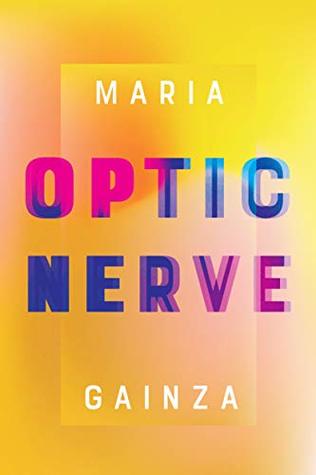When earlier in the week I read Johanna Thomas-Corr’s excellent review in the Guardian of Maria Gainza’s new novel Portrait of an Unknown Lady, I was reminded that I never had caught up with Gainza’s first novel Optic Nerve, published in its original Spanish in 2014 and then latterly in an English translation by Thomas Bunstead in 2019. I remember reading reviews of it, noting it down in my ever-expanding ‘of interest’ file. I even remember, quite clearly, holding a copy of the book in my hand. I was in a big Waterstones somewhere – either Chris or I, I cannot recall now which of us it was, had been asked to come in and sign some books. I remember trying to decide between Optic Nerve and Laura Cuming’s elegantly articulated memoir On Chapel Sands, both books, coincidentally, with a central focus on art.

In the end I chose the Cuming, promising myself I would acquire the Gainza at a later date. But I never did. That morning, its details blurry, feels far away, on the other side of an unspeakable divide, with those books two of the sparsely connecting threads between then and now. Reading Thomas-Corr’s admiring retrospective words about Optic Nerve, I experienced a sudden and intense hunger for it, for that book precisely, no other would do. Not even wanting to wait the time it would take to arrive in physical form, I downloaded it in e-format and started to read it more or less immediately.
Novels by nearest and dearest aside, Maria Gainza’s Optic Nerve – or so it feels to me in this moment – is the most beautiful book I have ever read. ‘It was clear that Gainza, like British authors Rachel Cusk and Claire-Louise Bennett, was opening up new possibilities for the novel as a place of freedom,’ Thomas-Corr writes in her review, ‘where you could blend fiction, memoir, art history and anecdote. She immediately felt like a thrilling discovery.’ I agree with this totally. I agree also with her additional claim that Gainza’s fiction actually ‘has more in common with Roberto Bolaño’s, with its themes of art and infamy, craft and theft.’ There is, as Thomas-Corr maintains, a Bolano-esque depth of field to her ‘stories within stories, each with its own melancholy mood and unsolvable mystery.’
And there is something more, something still greater, a quality of emotional admission, of inclusivity and of risk-taking, of personal involvement – of vulnerability even – that reminds me of the stories and writing of Mariana Enriquez, a passion that dares to reveal, to expose the self in a way that others have not, and that includes myself.
I can say only that I am thinking on this, wondering and struggling with how to address it. I am getting to know the paintings Gainza writes about in Optic Nerve, studying them in detail, reliving the moments of their discovery through the filter of Gainza’s tapestried language, of a knowledge profoundly felt and acutely described.
I am saving Maria Gainza’s new book for the moment, as something to look forward to. To cherish and to rejoice in. We need voices like these, above all, voices that remind us of all that life and art can be and what it is for.